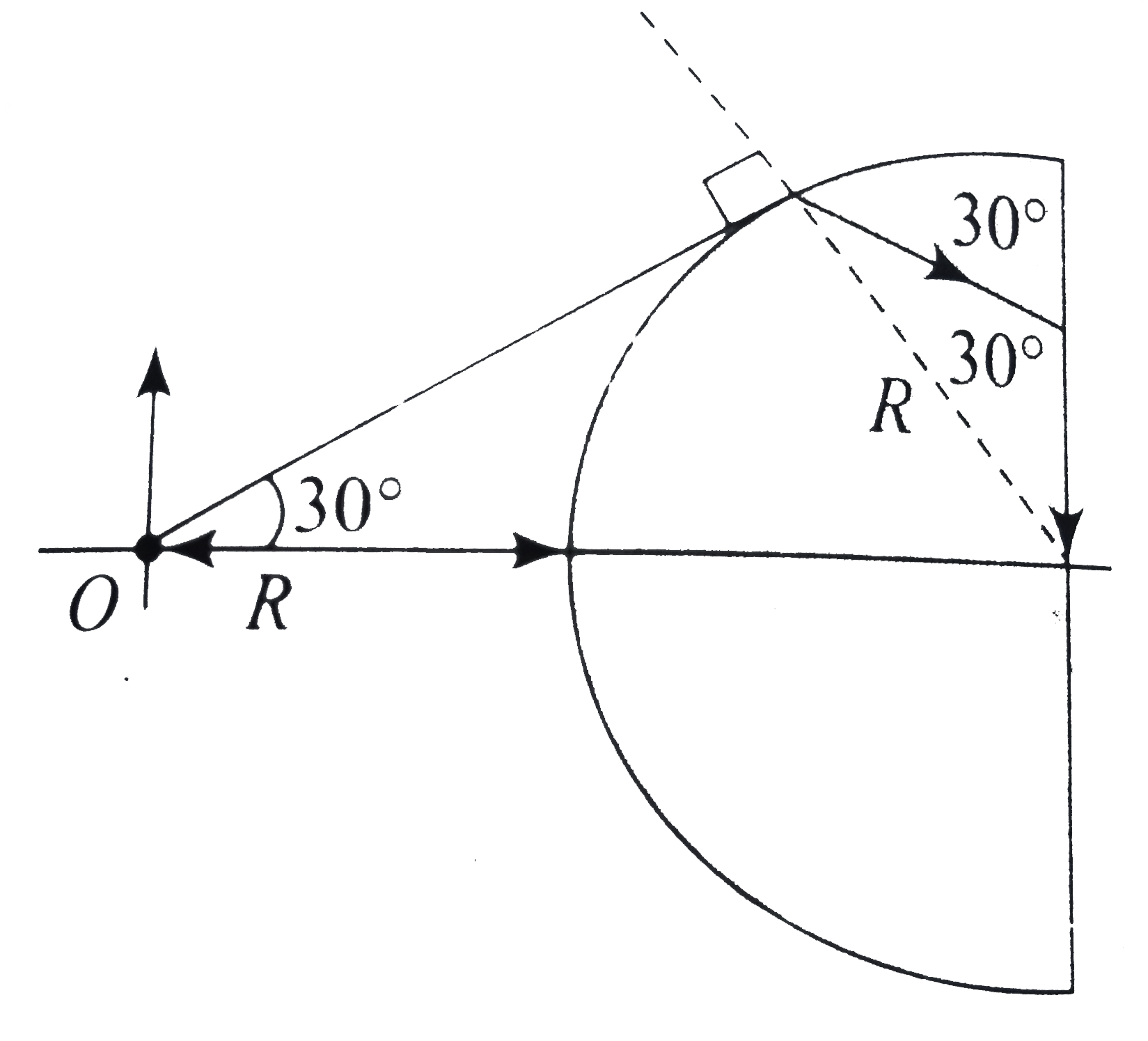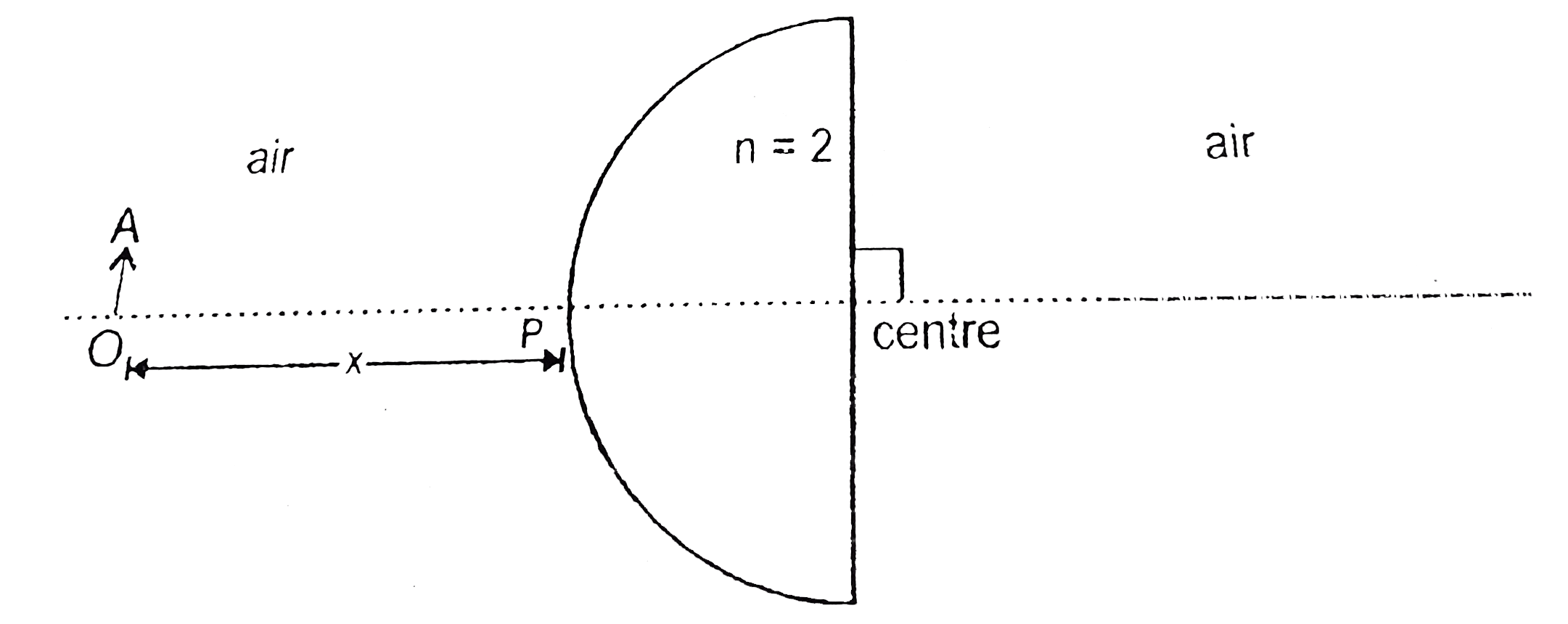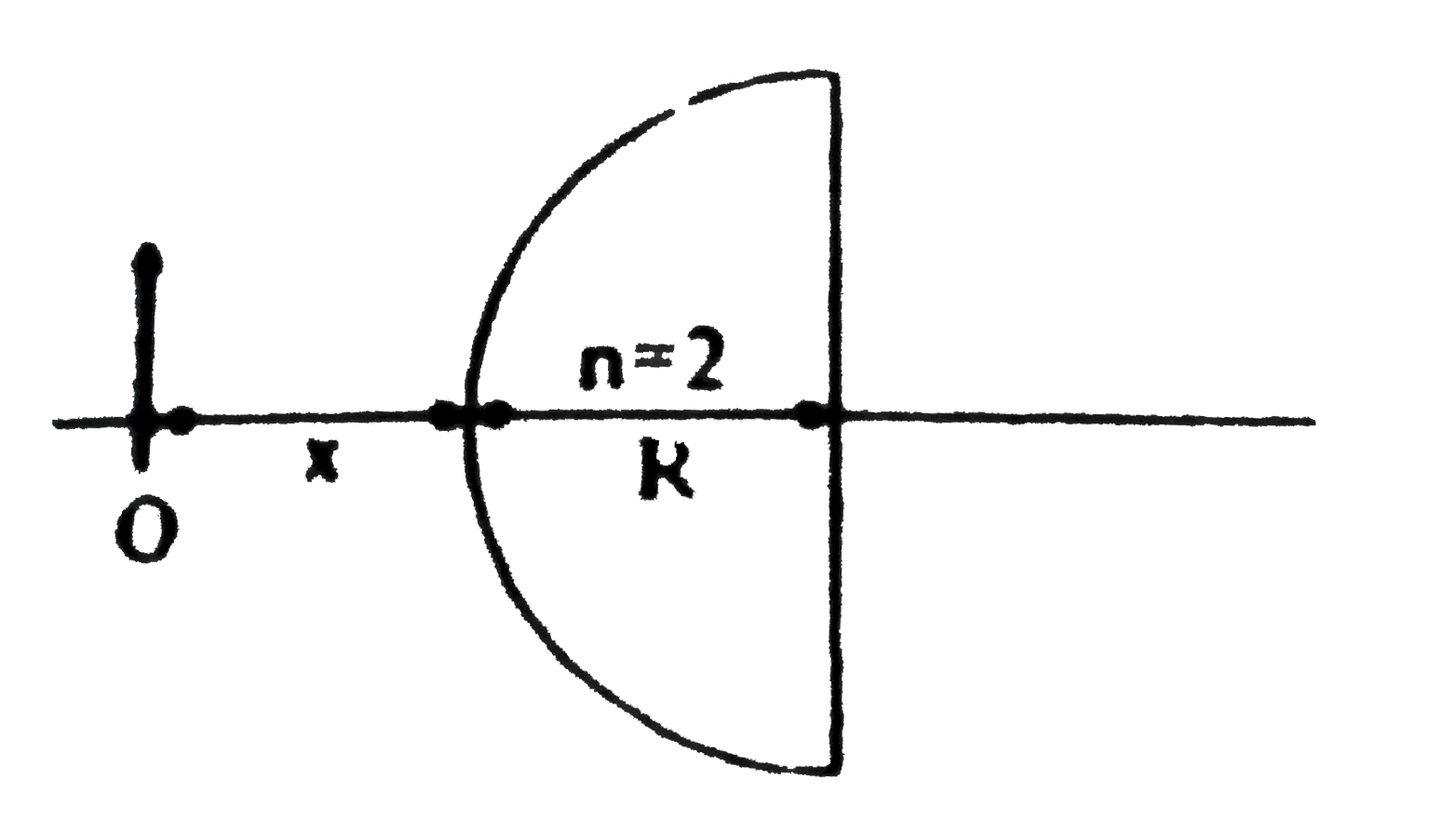Consider a transparent hemisphere (n=2) in front of which a small object is placed in air (n=1) as shown in figure. 
Q. Consider a ray starting from O which strikes the spherical surface at grazing incident (i=90∘). Takin x=R, what will be the angle (from normal) at which the ray may emerge from the plane surface.
90∘
0∘
30∘
60∘
The correct Answer is:a
i. μ2v−μ1u=μ2−μ1R
Taking refraction first at curved surface,
2v1+1x=1R⇒v1=2Rxx−R
For plane surface,
v′=v1R⇒v′=xR+R2x−R
⇒1v−2(x−R)R(x+R)=0
1v−2(x−R)R(x+R)
For virtual image,
1v<0⇒2(x−R)R(x+R)<0
x<R
ii. For x=2R
V1=4R2R=4R⇒u=−2R
m1=μ1μ2,vu=12,4R(−2R)=−1
m2=1⇒m1m2=−1
Image is real, inverted, and of same size.
(iii) Hence, correct answer is 90∘

Topper's Solved these Questions
- GEOMETRICAL OPTICSBOOK - CENGAGE PHYSICSCHAPTER - GEOMETRICAL OPTICSEXERCISE - Integer
15 Videos
- GEOMETRICAL OPTICSBOOK - CENGAGE PHYSICSCHAPTER - GEOMETRICAL OPTICSEXERCISE - Archives
7 Videos
- GEOMETRICAL OPTICSBOOK - CENGAGE PHYSICSCHAPTER - GEOMETRICAL OPTICSEXERCISE - Assertion-Reasoninig
2 Videos
- FRICTIONBOOK - CENGAGE PHYSICSCHAPTER - FRICTIONEXERCISE - QUESTION BANK
1 Video
- GRAVITATIONBOOK - CENGAGE PHYSICSCHAPTER - GRAVITATIONEXERCISE - Question Bank
39 Videos
Similar Questions
A prism (n=2) of apex angle 90∘ is palced in air (n=1). What should be the angle of incidence so that light ray strikes the second surface at an angle of incidence 60∘.
View SolutionThe face AC of the prism ABC of refracting angle 30∘ and refractive index square root 2 is silvered. A ray of light, after refraction from face AB, strike the face AC at 90∘. Find the angle of incidence and path traced by the ray after reflecting from the silvered surface.
View Solution
Knowledge Check
Consider a transparent hemisphere (n=2) in front of which a small object is placed in air (n=1) as shown.

Consider a ray starting from O which strikes the spherical surface at grazing incidence (i=90∘) Taking x=R what will be the angle (from the normal) at which the ray emerges from the plane surface.A90∘B0∘C30∘D60∘
Consider a transparent homogenous hemisphere of refractive index n=2 in front of which a small object is placed in air as shown in figure.Aif value of x=3R then the final image of the small object OA will be real & inverted.BIf value of x=2R then the final image of the small object OA will be inverted and magnified.Cconsider a ray starting from O which strikes the spherical surface at grazing incidence (i≅90∘) taking x=R the angle (from normal) at which the ray will emerge from the plane surface is 30∘Dconsider a ray starting from O which strikes the spherical surface at grazing incidence (i≅90∘). Takin x=R the angle (from normal) at which the ray will emerge from the plane surface is 90∘.Consider a transparent hemisphere (n=2) in front of which a small object is placed in air (n=1) as shown.

What is the nature of final image of object x=2RAErect & magnifiedBInverted & magnifiedCErect & same sizeDInverted & same size
A ray of light strikes the glass slab at an angle of 90∘ from its surface. What is the angle of incidence and the angle of refraction ?
View SolutionConsider a transparent hemisphere (n=2) in front of which a small object is placed in air (n=1) as shown in figure.

Q. What is the nature of final image of the object when x=2R?
View SolutionConsider a transparent hemisphere (n=2) in front of which a small object is placed in air (n=1) as shown.

For which value of x of the following will final image of object at O be virtual
View SolutionConsider a transparent hemispher (n=2) in front of which a small object is placed in air (n=1) as shown in figure.

Q. For which value of x, of the following , will the final image of the object O be virtual?
View SolutionLight ray is incident on a prism of angle A=60∘and refractive indexμ=√2.the angle of incidence at which the emergent ray grazes the surface is given by
View Solution
